Superposition Theorem Assignment Help
www.assignmenthelp.net provides superposition theorem Assignment Help, electrical engineering homework help or electrical engineering Assignment Help. We provide every kind of online tutoring assistances. Submit your homework to us to get help in any kind of homework. We are available 24*7. We provide 100% plagiarism free service.
Superposition Theorem tutor
We have highly professional tutors and an excellent team for teaching superposition theorem and its problems. Tutors for this topic are electrical engineers with masters and PHD degrees. They use latest advanced technologies to teach different difficult concepts to students. Tutors use such teaching methodologies so that students gain maximum interest in the subject.

Superposition Theorem
Superposition theorem states that for a linear system the voltage or current in any branch of the circuit, which has more than one independent source, is equal to the sum of responses caused by each independent source acting alone while all the other independent sources are replaced by their internal impedances. To make sure the contribution of each individual source, all of the other sources have to be turned off or set to zero by: replacing all other independent voltage source with a short circuit (eliminating potential difference) and replacing all other independent current sources with an open circuit (eliminating current). This procedure is followed for each source in turn and then the responses are added to get the resultant operation of the circuit. This resultant circuit operation is the superposition of various current and voltage sources. Superposition theorem is applicable to linear networks (time varying or time invariant) consisting of independent sources, linear dependent sources, linear passive elements Resistors, Inductors, Capacitors and linear transformers. The superposition theorem is very important in circuit analysis and is used to convert any circuit into its Norton equivalent or Thevenin equivalent. One very important point to be considered is that superposition works for current and voltage but not for power. Hence, the sum of powers is not the real consumed power. To calculate power we should first use superposition to find both current and voltage of that linear element and then calculate sum of the multiplied voltages and currents respectively.
Superposition Theorem example
Let's look at our example circuit and apply Superposition Theorem to it:
Superposition Theorem Assignment Help By Online Tutoring and Guided Sessions from AssignmentHelp.Net
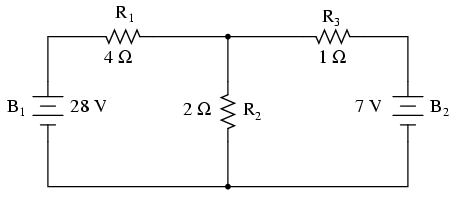
Since we have two sources of power in this circuit, we will have to calculate two sets of values for voltage drops and/or currents, one for the circuit with only the 28 volt battery in effect. . .

. . and one for the circuit with only the 7 volt battery in effect:
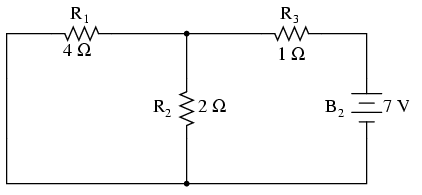
When re-drawing the circuit for series/parallel analysis with one source, all other voltage sources are replaced by wires (shorts) and all current sources with open circuits (breaks). Since we only have voltage sources (batteries) in our example circuit, we will replace every inactive source during analysis with a wire.
Analyzing the circuit with only the 28 volt battery, we obtain the following values for voltage and current:

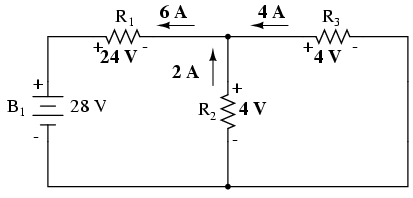
Analyzing the circuit with only the 7 volt battery, we obtain another set of values for voltage and current:

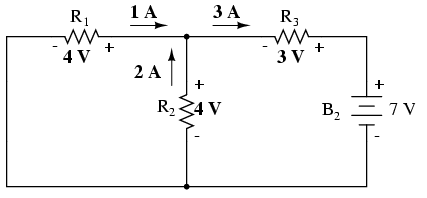
When superimposing these values of voltage and current, we have to be very careful to consider polarity (voltage drop) and direction (electron flow), as the values have to be added algebraically.
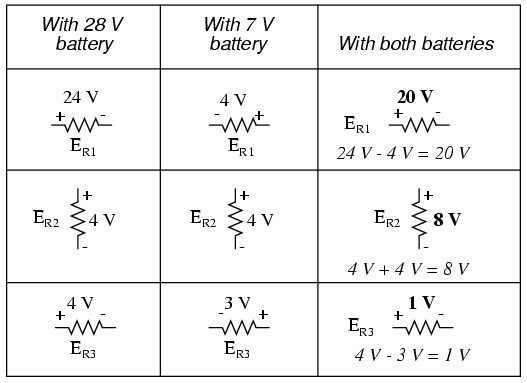
Applying these superimposed voltage figures to the circuit, the end result looks something like this:
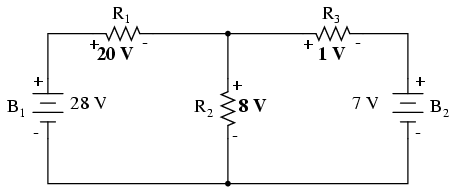
Currents add up algebraically as well and can either be superimposed as done with the resistor voltage drops, or simply calculated from the final voltage drops and respective resistances (I=E/R). Either way, the answers will be the same. Here I will show the superposition method applied to current:
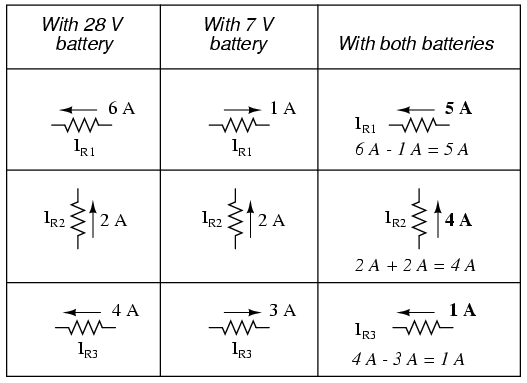
Once again applying these superimposed figures to our circuit:
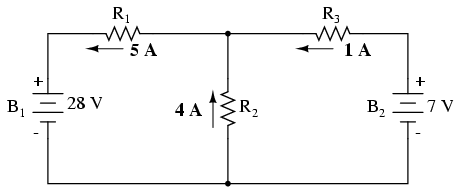
Superposition Theorem | Superposition theorem Assignment Help | Electrical engineering homework help | Electrical engineering Assignment Help | Electrical engineering project help | help with Electrical Engineering Courses.


